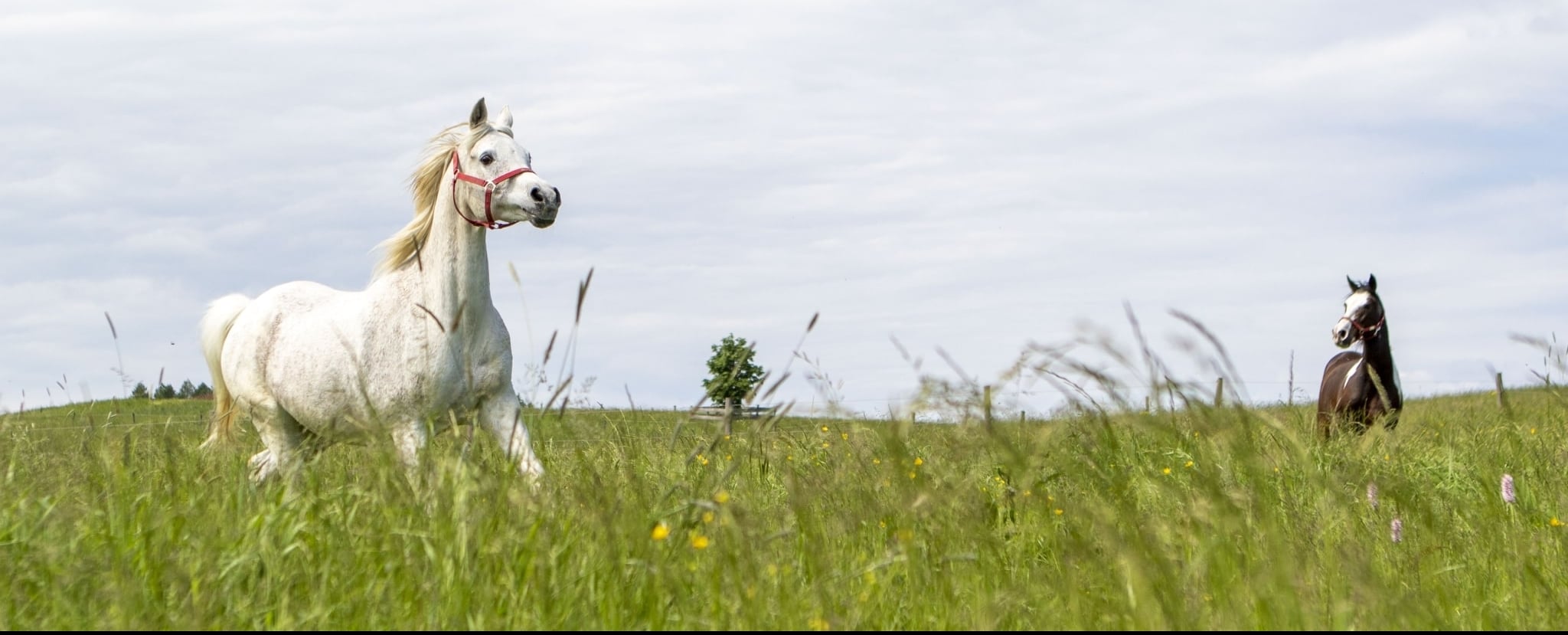
Déploiement des connaissances
Les derniers résultats de la recherche, appliqués avec succès
Parasitic infestation is a permanent challenge for all those responsible for livestock farming. In the case of farm animals, gastro-intestinal infections occupy the front of the screen from the point of view of animal health. Inadequate monitoring can lead to serious illnesses, even death. It is therefore very important to plan and implement parasite management with care. But the good news is that all parasite control is not necessarily a source of concern and a reason for avoidance, because healthy animals can live very well with a moderate infection and this treatment can even have positive effects on the immune system. Two projects illustrate the way in which Gut Aiderbichl uses a progressive approach to parasite management in livestock, cows, dogs and chickens.
Surveillance of the parasites among the equidés
Base/point de départ: Parasitic infestation is a constant challenge for animals. Gastro-intestinal infections are at the forefront of animal health. Inadequate control can lead to serious illness or even death. The management of the parasites of all the animals living at Gut Aiderbichl is therefore very important. A parasitic infestation can be diagnosed by an examination of the vitals, but the removal of a parasite is not always a cause for concern and a reason for avoidance. Animals in good health can live very well with a moderate infection and this treatment can even have positive effects on the immune system. Until 2019, parasite checks on the equidae at Gut Aiderbichl were carried out in most of the sites at regular intervals of three or four times a season.
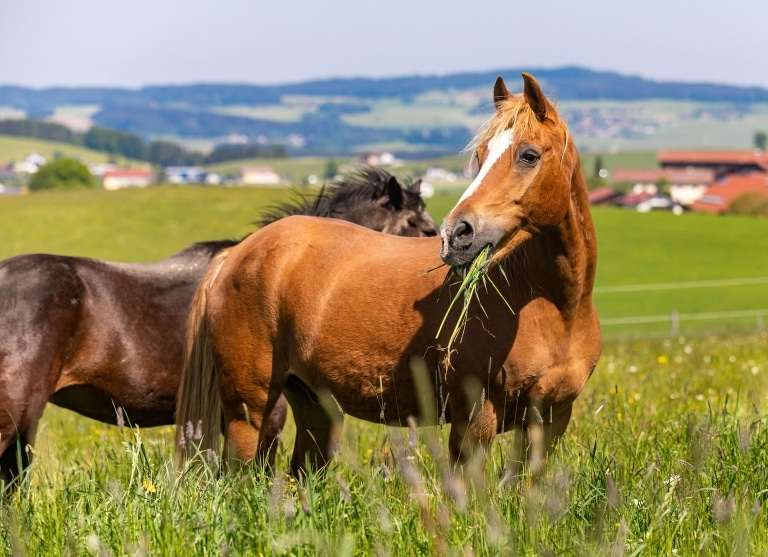
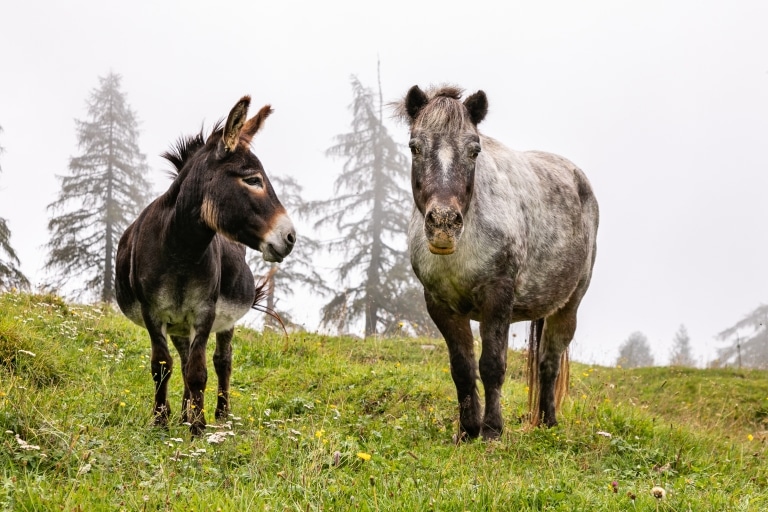
Objective: In view of the aggravation of the global problem of resistant parasites, a progressive reorganization of the management of parasites in the aquatic animals of the AG was initiated in 2020. With the introduction of a concept of selective centrifugation based on the Swiss model, the objective is to avoid centrifuging the aquatic animals in the future only in case of need on the basis of a prior examination of the sells. The aim of reducing the use of medicines is to avoid unnecessary stress for animals and to protect their environment in the event of spillage of medicines. The centrifugation of cattle with an increased excretion of parasite eggs, which is still necessary, makes it possible to avoid further contamination of the pens if it is carried out quickly and thus reduces subsequent infections in other cattle.
New results: During the first year of monitoring (2020), only 20% around of the approximately 1,000 final tests carried out on the six sites initially included in the study yielded results that required the installation of a vermifuge. On this basis, a new reduction in the centrifugation rate of 22% was recorded on the same sites the following year. This is already a first indication of the considerable potential of surveillance to reduce the intensity of treatment in the future.
Perspectives: The parasitological surveillance of the équidés is an "open" project and new discoveries are made every year. Continued evaluation and, if necessary, optimization of surveillance are essential and guarantee continuous development. The latest results and developments can be consulted here.
Publication: Magazine "Leben Lieben" - Printemps 2022
Gestion de projet: PD Dr. Hubertus Hertzberg
Surveillance des parasites chez les petits ruminants
Base/point de départ: Infestation by the gastrointestinal tract is one of the main problems of ovine and caprine animals from the point of view of animal health. Ovine and caprine animals do not develop very low immunity to parasites, which means that not only young animals but also adult animals can become ill and must therefore be included in the control measures. The management of parasites is therefore very important. The examinations of fèces offer a very good opportunity to diagnose the extent of parasite excretion in individual animals. An infestation of low severity can be tolerated well by an animal in good health. On the sites of the AG, where one can expect an increased contact with parasites for the moutons and chèvres due to the more important contact with the pastures, a management of parasites based on the diagnosis is being implemented since 2021, which also includes the camelids from the South America and the dromadaires on the main site of Henndorf.
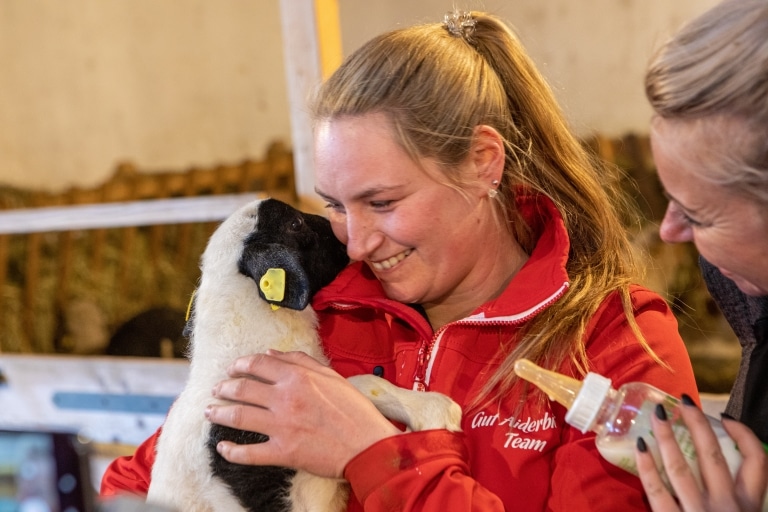
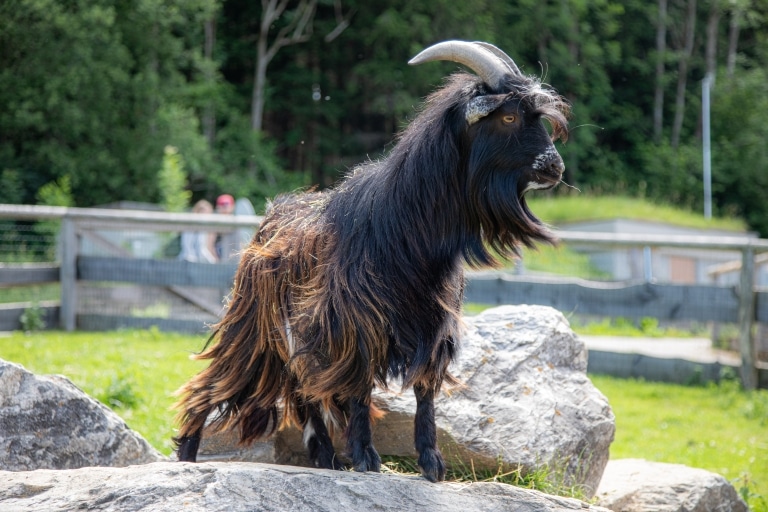
Objective : The problem of resistance to gastro-intestinal infections, which is growing rapidly throughout the world, requires a reorientation of the management of parasites in small cattle. For the animals at Gut Aiderbichl, the objective is to move from a routine treatment to a control program based on their needs. The rapid implementation and subsequent review of the treatments will make it possible to prevent further contamination of natural spaces by parasitic strains and to reduce future infections in other animals. The aim of reducing the use of medicines is to avoid unnecessary stress for animals and to protect their environment in the wake of the release of medicines.
New discoveries: The experience gained to date - which is still limited - shows that the parasitic load of ovines and caprines can vary considerably, even within a group, and that it would therefore be desirable to select carefully the animals that need to be treated in order to reduce the use of medication. This is also explained by the fact that initial observations indicate that the efficacy of the drugs used on different sites is very limited.
Perspectives: The experience gained on the previous sites forms the basis for the extension of the parasitological study to other sites.
Gestion du projet: PD Dr. Hubertus Hertzberg
Centre de réhabilitation pour équidés de la Fondation Sandgrueb
Base/point de départ: People suffering from serious diseases pose emotional, financial and medical problems for animal owners, especially when it comes to diseases for which there is no established treatment. These diseases also often affect older animals, which means that they are more often abandoned, or even create animal welfare situations. Unfortunately, the owners are often abandoned, which can lead to the neglect, abandonment or even death of the animals.
Au nom de Gut Aiderbichl, sla Fondation Sandgruebs'occupement tout particulièrement de ces animaux. At the rehabilitation center in Egg, near Zurich, wconsiderable efforts are being made to alleviate these conditions. However, it is a very difficult task due to the lack of frequent therapeutic options. In collaboration with the Vetsuisse faculty de l'université de Zurich and Vetmeduni Viennaintensive efforts are being deployed to permanently improve the quality of animal quality of life of the animals and put effective therapies at the forefront.
The diseases to be treated can be very diverse, but some are distinguished by their frequency and their impact on the quality of life, such as chronic obesity, sarcoidosis and other tumors (e.g. melanoma), sabot cancer, the abcès récurrents du sabot, le lymphoedème chronique progressif (LCP) chez les chevaux à sang froid, le syndrome métabolique équin (SME), la maladie de Cushing équine, la fourbure et les maladies dentaires, to mention just a few.
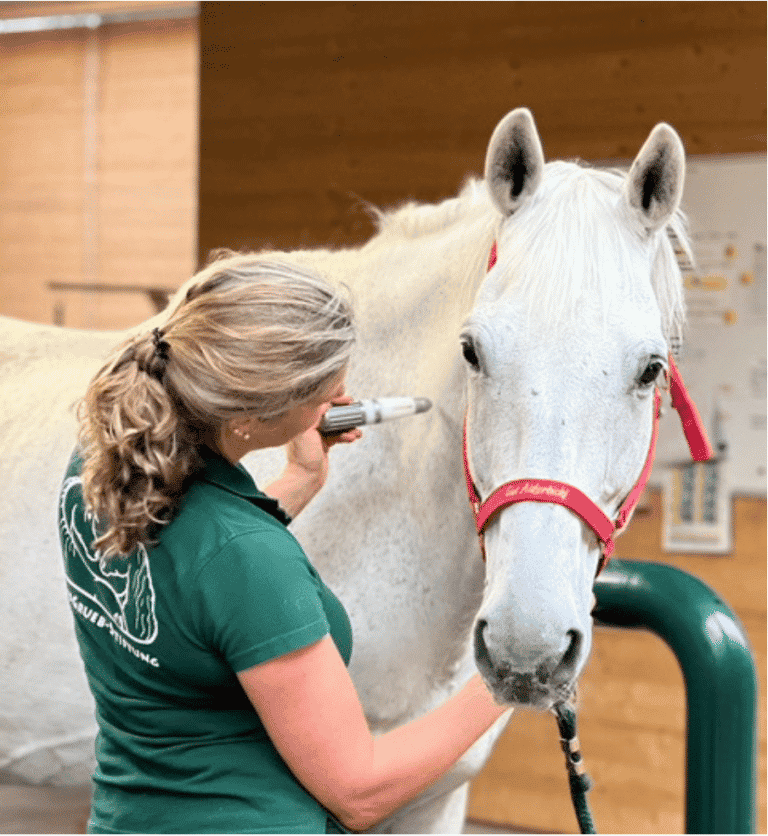
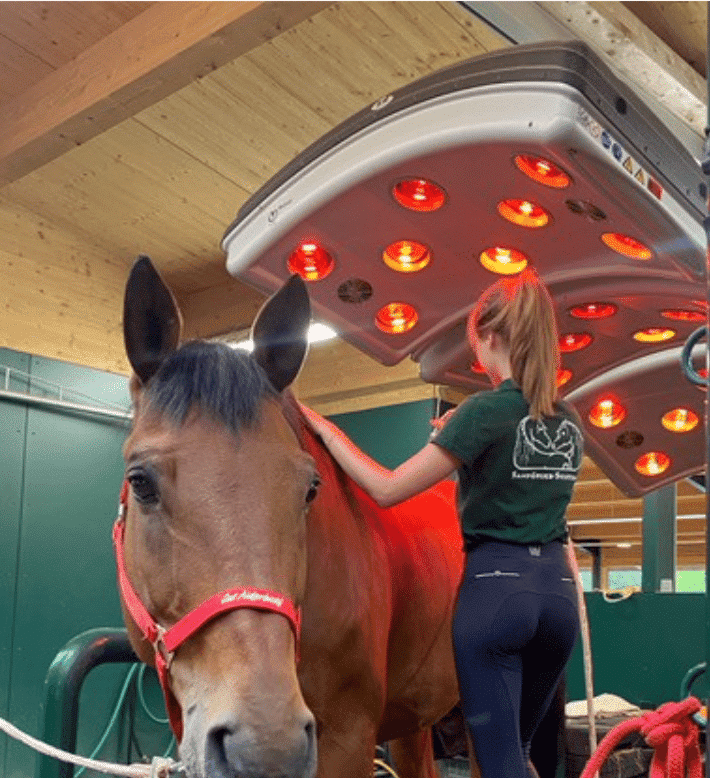
Objective: Le center de réhabilitation se concentre sur une approche holistique de la thérapie. In addition to physical recovery, the mental well-being of the horses is equally important. Care and support, as well as a friendly approach to the horse, in which a lot of time is devoted to each patient, are essential. The success is based on the combination of a healthy psychology, veterinary treatment, balanced nutrition and exercise. Contact with the patients is also particularly important.
The aim is to treat the diseases in an effective and balanced manner and to develop new methods of treatment, particularly in areas where there are no existing therapies. Emphasis is also placed on individualized palliative therapy to improve the quality of life of animals in the terminal phase.
Maladapted horses with difficult problems that require intensive care will benefit from veterinary support and continuous care at the rehabilitation center.
Intensive work is underway to develop easy-to-apply therapeutic approaches, as effective and easy-to-implement therapeutic options need to be found quickly for the more than 700 horses at Gut Aiderbichl. In addition, the knowledge gained here can be passed on to a wider public in the future in order to raise awareness of diseases, for example in older animals or those suffering from chronic diseases, and thus enable more preventive treatment so that the disease does not survive or can be reduced to a preventive stage.
New discoveries: In addition to conventional medicine, the rehabilitation center also relies on alternative, but medically valid, treatment methods.
The Vetdrop® treatment has proven to be very effective to date. The treatment consists of the application of oxygène concentré enriched with natural and pharmaceutical substances (urine, hyaluronic acid, essential oils) and allows this mixture to penetrate into the deeper layers of the tissues. In addition to doulourous arthritis or tendinous lesions, it is also possible to treat inflammation or chronic or chronic pain.
The team also achieved very good results with the disinfectant and anti-inflammatory effect of a disinfectant solution (Xeron®) based on a highly effective hypochlorous acid (HOCL). It is an acidic or neutral water with a pH of 4.7 or 7.0. The water acts against viruses, bacteria and mushrooms by oxidation. It is used successfully in the treatment of acute and chronic infections, as a treatment for phlegmons and deep cutaneous infections, mastitis, mucus and many other diseases.
Outlook: In cooperation with Gut Aiderbichl, the rehabilitation center can become a training center for the employees of Gut Aiderbichl and familiarize them with new treatment methods. In addition, the rehabilitation station is a center for medical care for horses with particularly serious illnesses that require intensive treatment at Gut Aiderbichl.
Management of the project: Dr.med.vet. Karina Klein, DVM-PhD, Hôpital vétérinaire de Zurich
Farming close to nature is the most adapted way of life for animal species. At the same time, it is sustainable and offers the best opportunities to protect biodiversity. The cattle that spend the day and night in the pastures organize their daily activities in a very different way from those that live in human-controlled farming systems. A clean diet is always available in nature, which allows livestock to avoid unfavorable weather conditions and insect infestations. Unfortunately, many of them are no longer able to live freely in the pastures today because they are threatened by diseases related to the abdomen. This is why various projects carried out at Gut Aiderbichl focus on the composition of the surfaces, their optimization with the help of appropriate semences and the quality of the flax that is harvested. The surfaces are the basis of natural livestock farming and therefore of the mental and physical health of the animals.
Compostage
Base/point de départ: On average, a cattle produces between 20 and 30 kg of animal waste per day, which corresponds to around 7 to 10 tons or 20 to 30 m³ per year. These are the large quantities of fumier that an animal facility has to handle. This fumier contains large quantities of nutritive elements which, if properly treated, can break down the material cycle. However, it may also contain pathogenic agents, parasites or bad herbs that you do not want to avoid. It is therefore advisable to consider an appropriate and economically justifiable valorization of the fumier.
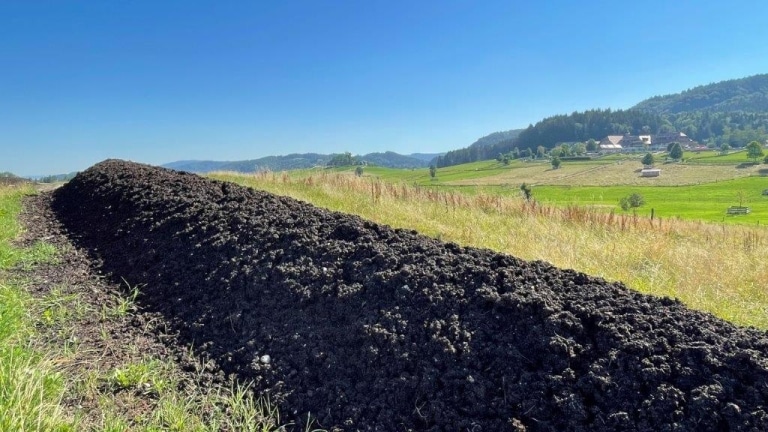
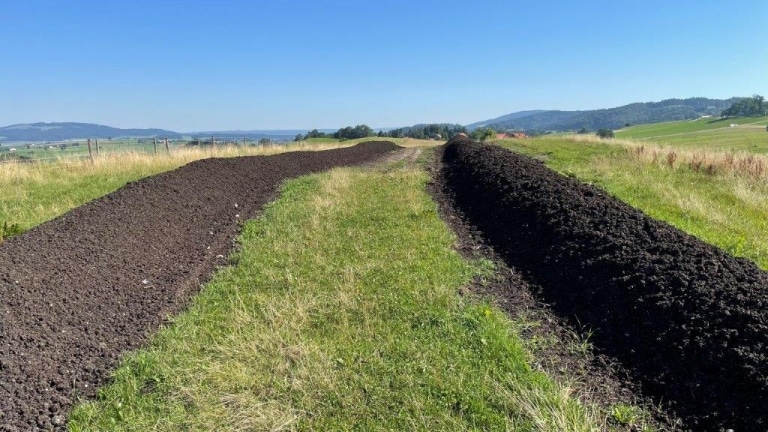
Objective: Le but de ce projet est de mettre en place un système de compostage optimisé à Gut Aiderbichl pour le traitement du fumier de cheval. A concept of quality, ranging from the collection of the waste to the management of the process itself and the utilization of the compost product, accompanies this project. A reduction in volume by three can already be observed during composting. The compost product can therefore be stored and used at the ideal times for the prairies. In addition, a natural "sanitizing effect" of the fumier is obtained during the composting process, with the temperature of the material reaching up to 65°C. The non-essential compost must be of an irreproachable quality in order to be put on the market, especially for amateur gardeners. To achieve this goal, the employees of Gut Aiderbichl are trained in composting.
Nouvelles découvertes: Le compostage au champ is utilisé pour traiter le fumier. It is optimized for the different situations of the Gut Aiderbichl selected farms, depending on the type of litter and the organic sous-products available. In addition, a study can be carried out on the inactivation of pathogenic agents, parasites and bad herbs during the composting process.
Perspectives : Based on the results obtained during the project, a guideline will be developed to serve as a basis for implementation in other farms. This guide will not only deal with the management of the composting process itself, but also with the use of high-quality compost. An economic evaluation of the concept concludes this project.
Management of the project: Dr. Jacques Fuchs, FiBL Suisse
Prairies
Base/ point de départ: The most important herbs for the European economy are German pasture herbs. It can be found in the standard lists of varieties for pastures and cattle pastures. It is particularly important for livestock farming because it is rich in energy and proteins. However, the horses and cows can benefit from minimal nutrition and achieve maximum performance in terms of exercise. This genetics, which was a prerequisite for the selection of the ancestors, is nowadays a menace for our horses due to the diseases of the abdomen, especially those of the ponies. In addition to obesity, serious metabolic problems occur over the years, comparable to diabetes in men, which lead to fatal diseases such as fourbite in horses. A reduction in nutrition can lead to digestive problems and inflammation of the mucous membranes of the digestive tract. The short grazing routes are no longer an alternative because they represent a selection of bad plants.
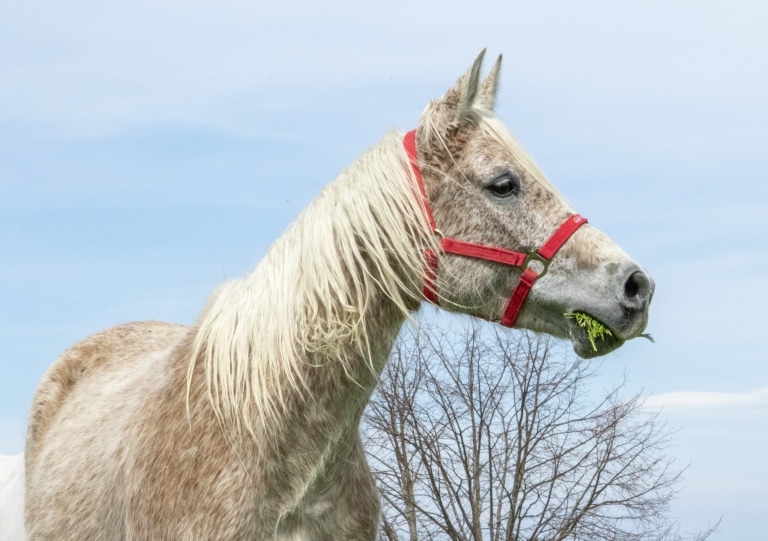
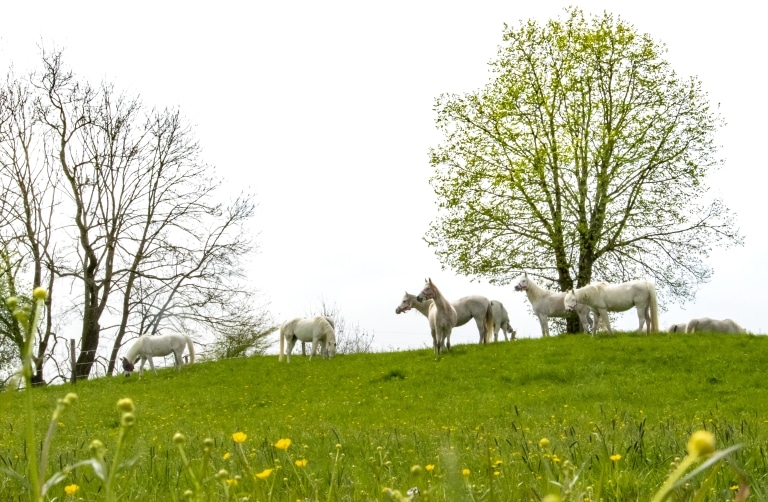
Objectif: Les exploitations de Gut Aiderbichl ont des prairies avec une végétation très différente. In addition, the nutritional requirements vary depending on the health status of the animals. Since 2021, the assessment of livestock farms has been reviewed in order to determine which pastures are suitable for young cattle and which are less suitable. The areas that are too rich must be replaced by a more acidic base. The cattle and the elderly suffering from obesity need to be provided with permanent pastures composed of low-yielding acidic grasses and acidic medicinal herbs. The composition of the plants is a reflection of the location, the soil, the weather conditions and the use that is made of them. Each farm develops its own composition, which must allow the animals to be nourished in a balanced way so that they can lead a healthy and optimal life.
New discoveries: À Trevol (France) et Szepalma (Hongrie), les sols et le climat permettent de créer des prairies semi-arides riches en espèces. This rich herbal vegetation is considered to be particularly favorable for robust and sensitive cattle breeds. Le domaine d'Aiderbichl Iffeldorf (Allemagne) pourrait récolter de grandes quantités de foin riche en fibres brutes et à faible consommation d'énergie à partir des prairies de sétaires. Les prairies de la vallée de Gut Aiderbichl Henndorf (Autriche) offer a mosaic à petite échelle de compositions très différentes. On y trouve même des prairies riches en orchidées et en graminées acides autour d'une petite tourbière de sphaigne et de linaigrette.
Outlook: Gut Aiderbichl innove. The equally diverse domains under one roof are unique and allow research into the links between the food base and animal health, which could be revolutionary for the future of livestock farming. We take this into account here.
Publication: Link to
Gestion du projet:
Semences
Base/ point de départ: The lengths of the semences for the pastures and the cattle pastures on the market are based on the standard lengths for cattle and are poor in quality. The high performance graminées used in these ranges result in the destruction of flora and fauna in the pastures of the livestock owners. High-performance pastures produce a layer of micro-organisms that are significantly richer in energy than the original pastures from which the cattle and sheep originate. A scientific study carried out in 2020 also revealed that around one million commercialized crops in four or five fields are infected by mushrooms known as endophytes. These champignons confer to the green semi-herb the particular resistance desired to acidification, to nutrient depletion and to overpasteurization.
Les graminées hôtes des champignons sont le pâturin et la fétuque. Certains principes actifs des champignons sont particulièrement toxiques pour les chevaux, car ces toxines agissent comme des perturbateurs endocriniens.


Objectif: Gut Aiderbichl wants to take precautions. The fields located in six different European countries are being tested to detect the presence of these mushrooms. Rather than continuing to use the semences de ferme issues du commerce, the objective is to interfere with the introduction routes and close the cycles. To this end, we are looking for suitable areas in our own farms in the surrounding areas. Gut Aiderbichl would like to obtain its own fresh semen from pastures with a composition that has been proven to be non-toxic and adapted to livestock. Collected in the form of matured plants, the growth of the green zone can be used as a transfer of nutrients in order to improve the quality and diversity of the farmland zones. In addition, the aim is to increase biodiversity through the use of regional wild semen in cooperation with public institutions.
Nouvelles découvertes: Les zones de Gut Aiderbichl sont largement exemptes d'endophytes toxiques. Les zones à forte densité de bétail et à alimentation constante en foin présentent des apports élevés de semences, y compris de plantes qui ne sont pas typiques du site. The purchased foin contains grains that pass through the digestive tube without being damaged. They enter the soil with a rich fumier in nutrients and germent. The fumier is a source of dispersion of grains often neglected. For farmers, the zones with a high diversity of species are not recognizable. Therefore, vegetation studies carried out by experts are indispensable if you want to discover the treasures of nature and avoid the loss of rare plants.
Perspectives: Ecosystems are dynamic. They are subject to influences and constant change. The continued monitoring of the base area by experts allows us to recognize the changes that are indescribable over time. In addition to the invasion of dangerous new plants and the invasion of new mushrooms that are easy to ignore in the production zones, this applies in particular to the imminent loss of biodiversity.
Publication: Lien vers
Gestion du projet:
Qualité du foin
Base/point de départ: The energy efficiency of the foot is also much too high for many horses and cows. The best foin according to all the criteria known to horse owners is the one with the highest energy efficiency. The Austrian Working Group for Farm and Livestock Management (ÖAG) declares that the flax that is considered to be the best according to all the directives and that almost all the owners of livestock strive to obtain is suitable for "high-level sport and livestock breeds". For the robust races (e.g. Noriker, Haflinger), the lots de foin aytenu less de la moitié du nombre de points réalisables lors de l'évaluation sont considérés par l'ÖAG. The horses at Gut Aiderbichl therefore require a completely different type of lead from the one given to sport horses at equestrian centers. What's more, the legs of older horses are being used more and more. These animals are therefore no longer able to chew on the large four wheels.
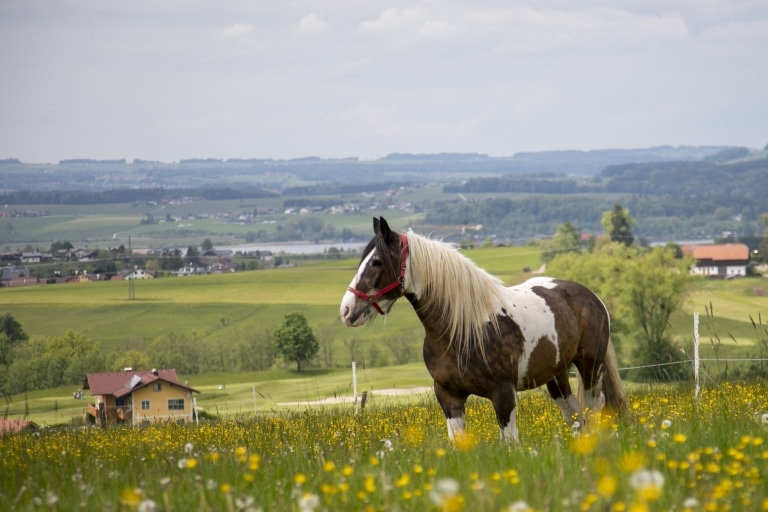
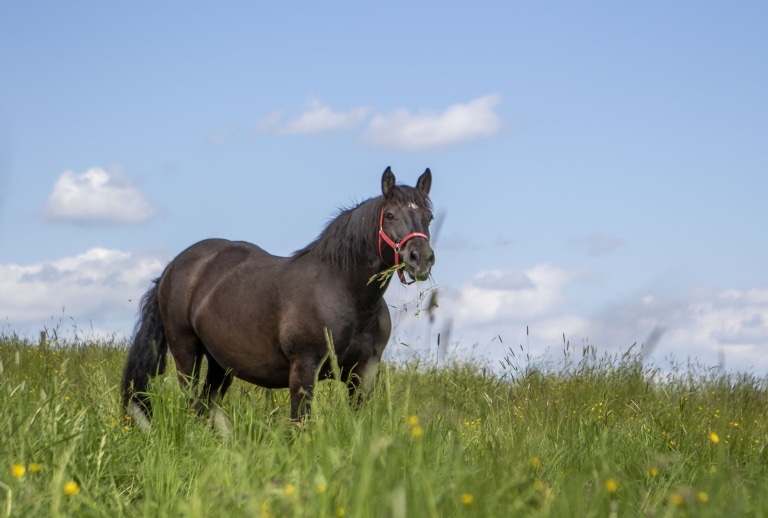
Objectif: Un foin aromatique et parfumé de couleur verte, riche en feuilles et pas trop grossier, ne peut être donné à de nombreux chevaux que de manière rationnée. However, long interruptions in feeding can cause ulcers in the intestines and intestinal tract and are therefore important for the well-being of the animals. Manger lentement pendant une lange période de croissance à low énergie est un objectif à atteindre pour de nombreux chevaux.
Nouvelles découvertes: Gut Aiderbichl wants to control the quality of each bale in the foin chamber and establish its traceability by labeling it. The evolution of each ball is fully documented in a journal: zone of filling, moment of filling, historical temperatures, humidity, etc. This information enables the problems to be resolved. In addition, samples of each batch of flax are sent to the laboratory for analysis in order to confirm the energy and protein content as well as any possible fungal infections.
Outlook: Hygienic quality requires a poor pouch quality, exempt from moisture and toxins. The delicate herbs contain many minerals, proteins and active principles of medicinal herbs, which are particularly beneficial for elderly and sick animals. It's a vast field of experimentation that yields passionate results!
Publication: Lien vers
Gestion de projet: